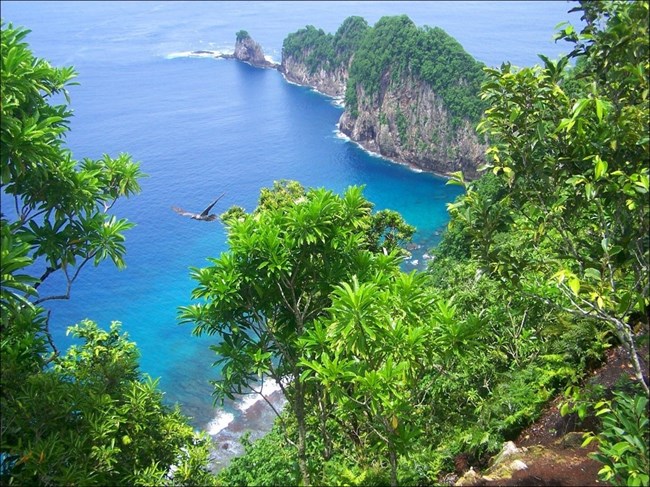Learn about NRCAs
The Natural Resource Condition Assessment (NRCA) Program provides framework, funding, and publishing support to parks to aid in the synthesis and documentation of natural resource conditions. Condition assessment reports are a tool to describe selected park resources, and record a snapshot of their current condition, identify trends, and identify potential or current threats and stressors. Understanding the condition and trend of natural resources is key for parks and NPS planners to appropriately prioritize and allocate stewardship resources.

NPS Photo
The National Park of American Samoa is a dramatic palette of deep greens and blues. Forested ridges rise sharply from the sea with seabirds and large fruit bats called flying foxes coasting above. Among the most impressive in the world, Samoa's coral reefs teem with over 975 species of colorful fish and more than 250 coral species.
Traditional NRCA Report: 2019
The Natural Resource Condition Assessment for the National Park of American Samoa was published in 2019. This NRCA is a collaboration between the NPS and the University of Vermont. For this review, the NRCA team selected reporting categories within five life zones in the park, to determine the overall snapshot condition of the park. Resource topics that were evaluated include:
- Marine water quality |
- Fruit bats |
|||||
- Benthic marine community |
- Forest birds |
|||||
- Marine fish |
- Seabirds |
|||||
- Sea turtles |
- Streams |
|||||
- Rainforest |
- Air quality |
|||||
- Cloud forest |
|
The condition of these categories varied in the assessment. Overall, the natural resources within the park were either in good condition or of moderate concern, with terrestrial resources scoring better than marine resources. Five terrestrial resources were in good condition (rainforests, cloud forests, forest birds, fruit bats, streams), one was of moderate conservation concern (seabirds), and another (air quality) was not evaluated due to insufficient data. Data gaps exist for nearly all reporting categories evaluated in this assessment. Many of the park’s data needs involve the challenge of determining ways to effectively sample and monitor biological events in order to increase statistical confidence and to ensure that long-term monitoring techniques are possible. In addition, in several cases, existing data need to be summarized and synthesized into a single source that will allow managers to more easily access and use existing information. Two threats to park resources were recurring themes in this assessment: invasive species and climate change. To date, the park has been able to gather information on climate change and its impacts through partnerships with other agencies, universities, and researchers. This has been a productive and cost-effective approach, and invasive species will continue to remain a priority threat for the National Park of American Samoa.
For other reports and natural resource datasets visit the NPS Data Store.
Source: NPS DataStore Collection 7765 (results presented are a subset). To search for additional information, visit the NPS DataStore.
Last updated: June 28, 2022
